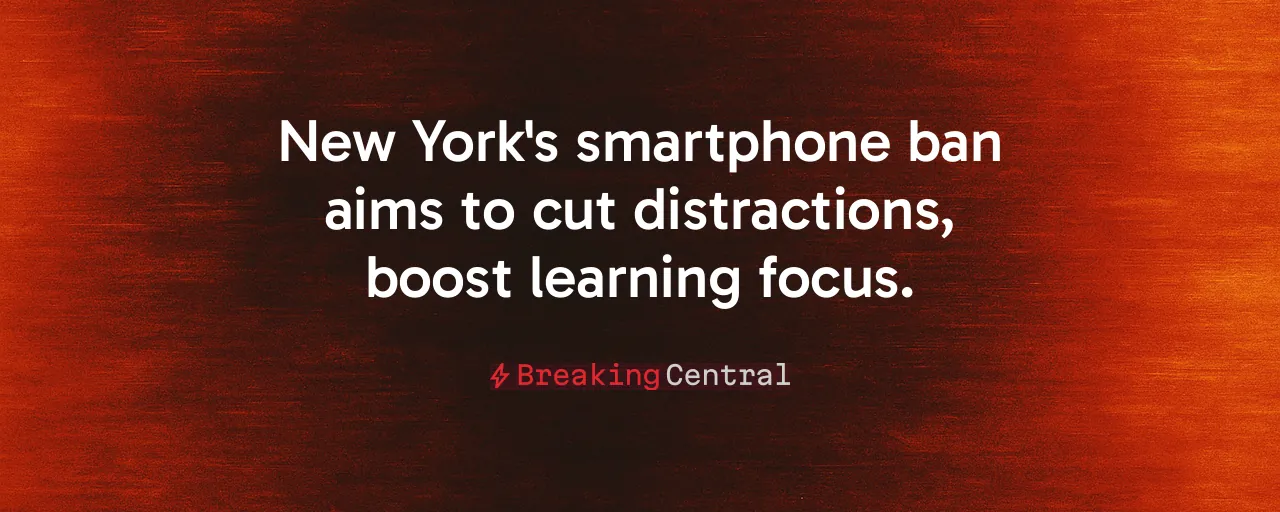A Classroom Revolution Begins
New York schools are gearing up for a major shift. Governor Kathy Hochul recently unveiled a website to guide districts in banning smartphones from classrooms, lunchrooms, and study halls for the 2025-26 school year. This bell-to-bell restriction, backed by state law, aims to create distraction-free environments. While the initiative provides resources for schools, the real story lies in what this means for students, parents, and teachers striving for academic excellence.
Smartphones have become a constant presence in classrooms, often pulling students away from lessons and peers. Teachers report spending valuable time policing device use, while students struggle to stay engaged. The new policy seeks to change that by prioritizing focus and discipline, values long cherished by families who want schools to prioritize learning over scrolling.
The policy removes phones to restore an environment where students can thrive. By setting clear boundaries, New York aims to level the playing field, ensuring every student has a fair shot at success without the lure of notifications.
Why Phones Undermine Learning
Research paints a stark picture of smartphones' impact on education. Studies show that even having a phone nearby reduces cognitive capacity, making it harder for students to concentrate. A London School of Economics study found test scores rose six points after phone bans, with low-income students benefiting most. In Spain, similar restrictions led to gains equivalent to nearly a year of learning in math and science.
Beyond academics, phones disrupt the social fabric of schools. Norwegian data revealed less bullying and fewer mental health issues for girls after bans. Teachers also report stronger classroom dynamics when students connect face-to-face rather than through screens. These findings underscore the need for decisive action to protect young minds.
New York's policy draws on these insights, recognizing that personal devices are not essential for learning. Schools already provide laptops and tablets for educational purposes, ensuring access to technology without the distractions of social media or games.
A Policy Built on Fairness
The statewide ban ensures consistency across districts, preventing wealthier schools from sidestepping rules while underfunded ones struggle. By allocating $13.5 million for storage solutions like lockable pouches, the state helps every school comply, regardless of budget. This approach promotes equity, ensuring no student is disadvantaged by uneven enforcement.
Flexibility is key. Districts can choose how to store phones, whether in lockers or homeroom bins, tailoring solutions to their needs. Clear exemptions also protect students with medical needs or language barriers, balancing fairness with practicality. Parents retain access to their children through school channels, addressing safety concerns without compromising the policy's goals.
Lessons From the Past
New York builds on historical lessons rather than breaking new ground. From 2005 to 2015, New York City enforced a mayoral phone ban, which many educators praised for reducing distractions. Its repeal led to a surge in classroom disruptions, prompting calls for stronger measures. Florida's 2023 statewide ban offers a recent success story, with improved attendance and grades reported across districts.
These examples show that phone bans work when enforced consistently. New York's approach builds on this by mandating secure storage and stakeholder input, ensuring teachers, parents, and students are part of the process. This collaborative spirit strengthens community trust and sets the stage for lasting change.
Challenges and Solutions
Enforcement will not be easy. Some students may try to smuggle secondary devices, and rural schools may need extra support to implement storage systems. To address this, districts are training staff and establishing clear penalties for non-compliance. The state's funding helps level the playing field, but ongoing costs will require careful budgeting.
Another priority is keeping schools engaging. Bans alone are not enough; students need alternatives like clubs, sports, and arts programs to fill the void left by phones. By investing in these activities, schools can foster real connections and give students reasons to stay involved.
A Vision for Stronger Schools
New York's smartphone ban is a bold step toward reclaiming classrooms for learning. By prioritizing discipline and focus, the policy aligns with the values of families who want schools to prepare students for life, prioritizing essential skills over constant digital alerts. It is a chance to rebuild community, fostering direct interaction among students.
The road ahead requires commitment. Schools need to enforce rules fairly, engage parents, and provide enriching activities to keep students invested. If done right, this policy could spark a broader movement, showing other states how to put education first.
Ultimately, the initiative extends beyond simply regulating phones. It aims to give students the tools to succeed in a world that demands focus, resilience, and real human connection. New York is leading the way, and the results could shape schools for generations.
